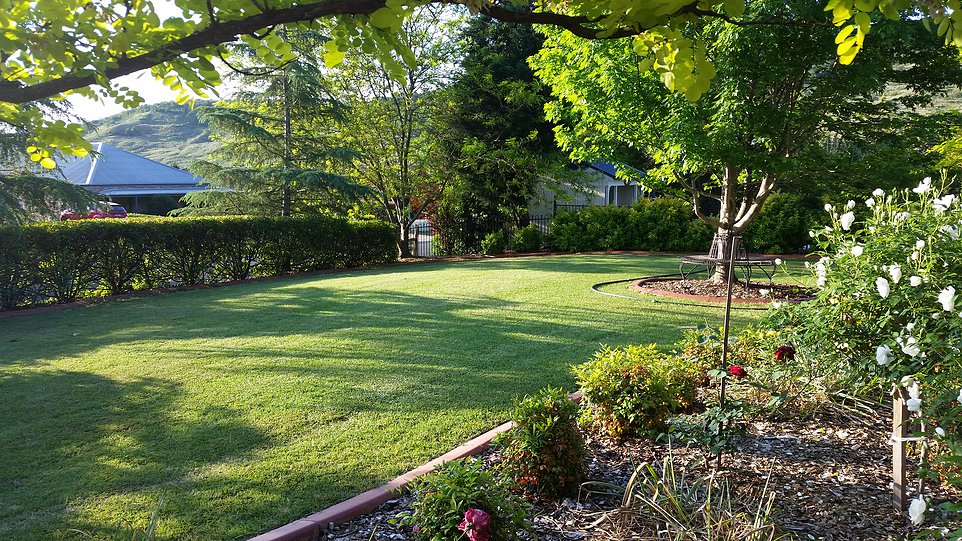Every garden needs a tree

When I walk into a treeless garden I sense something’s wrong
In my opinion, every garden should have at least one tree. When I walk into a treeless garden I sense there’s something wrong. Perhaps it’s because trees are critical for our survival. Maybe it’s because of their visual impact. Possibly it’s that deciduous trees help to mark key seasonal changes and also introduce a sense of longevity and permanence to the garden?
In truth, it’s probably a combination of all of these, but every garden, however small, needs at least one tree to help it to succeed. Often, people tend to look for garden rooms for sale, or even new ways to improve their lawns. However, planting a tree next to these rooms or on the lawn could drastically alter the appearance of their garden.
Many people fear putting a tree in small gardens, thinking that it will grow too tall and dominate or that its roots will start mucking about with the foundations. However, with regular pruning, it is possible to keep a tree in small gardens to a manageable size and also avoid any root damage. If the tree does grow too big, you can call a tree removal company to safely and effectively remove it.
Moreover, you may also need to be sensible and not plant trees such as oaks, eucalyptus and the dreaded cypress leylandii in small gardens, but there are many trees that’ll do the job nicely and can be planted at this time of year. As a general rule, make sure that you plant it at least its ultimate height away from the house. Here are my top ten.
Betula (birch) Silver birches are beautiful in a city space alongside strong architecture. The elegant jacquemontii ‘Grayswood Ghost’ has great autumn colour and yellow catkins in spring. Height to 18m, spread 10m.
Olive-olea europaea Evergrey leaves and tiny, creamy-white summer flowers. This elegant evergreen makes an excellent specimen plant for a sunny spot in the ground or a large pot. Height 5m, spread 5m.
Amelanchier lamarckii (snowy mespilus) Great as a single or multi-stemmed tree. It has white star-shaped flowers early in spring, with bronze leaves maturing to dark green and then fiery orange and red in autumn. Height and spread, up to 10m.
Sorbus (mountain ash) Sorbus vilmorinii has creamy white flowers in spring and clusters of berries that fade from red to white. The feathery foliage turns a dark crimson in autumn. Height 5m, spread 5m.
Magnolia If you have slightly acidic soil, a magnolia is perfect for the small garden. The evergreen grandiflora will add formality grown as a bush or tree, while the deciduous Star Wars is a light-pink, long-flowering new hybrid, which will stay small at 3m. Denudata ‘Yellow River’ has large goblet-shaped creamy yellow flowers in April/May and reaches 10m.
Malus (crab apple) The ornamental crab apples encourage wildlife and plenty of seasonal interest. Malus Floribunda has pale pink flowers in mid and late spring, followed by small, golden-yellow fruit often persisting into winter. Height and spread about 8m.
Cercis siliquastrum (Judas tree) Clusters of pink pea-shaped blooms burst from the new young shoots to cover the tree in colour before the leaves come out. From late summer onwards, large bunches of purple pods deck the branches and last well into winter. Height 10m, spread 9m.
Acer (maple) Japanese maples add a touch of Zen to a small city garden. Most thrive in shade as long as there’s enough moisture. Palmatum Sango-kaku and Osakazuki reach about 6m and have autumn colour.
Prunus Ornamental and fruiting cherries are stunning in spring while Prunus x subhirtella Autumnalis flowers from late autumn to early spring. Height and spread, 7m.
Arbutus andrachne (Greek strawberry tree) A glossy evergreen with a cinnamon-coloured trunk and white flowers. Height to 12m, spread to 10m.


